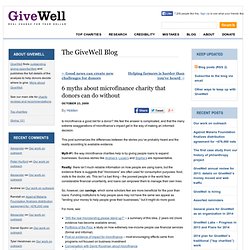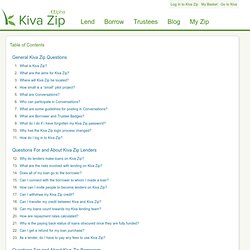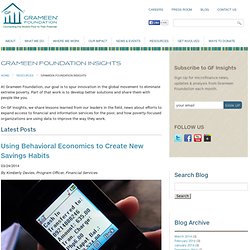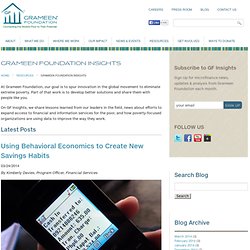

6 myths about microfinance charity that donors can do without. Is microfinance a good bet for a donor?

We feel the answer is complicated, and that the many extreme exaggerations of microfinance’s impact get in the way of making an informed decision. This post summarizes the differences between the stories you’ve probably heard and the reality according to available evidence. Myth #1: the way microfinance charities help is by giving people loans to expand businesses. Success stories like Andrea’s, Lucas’s and Sophia’s are representative. Reality: there isn’t much reliable information on how people are using loans, but the evidence there is suggests that “microloans” are often used for consumption purposes: food, visits to the doctor, etc.
So, however, can savings, which some scholars feel are more beneficial for the poor than loans. For more, see: “Will the real microlending please stand up?” Details at our post on evidence of impact for microfinance charities. Bottom line: should you give to a microfinance charity? Online Savings-led Library - Savings Revolution. SfC Evaluation study in Bentay Menchay and Kampot Provinces.pdf The purpose of this study is to examine the current operations and impact of SfC in Cambodia, and to conduct a baseline study.

A summary of the specific research goals are: (a) To review and analyze salient aspects of SfC’s operational structure, as it is being implemented by RACHA; (b) to identify membership income and poverty levels, assessing if the “very poor” are joining; (c) to assess the impact of SfC on member household’s income and livelihoods, savings, loans, assets, health, food security, education, resilience to shocks and empowerment; (d) to examine the impact of SfC on gender roles and relationships; and (e) to measure, in the baseline villages, the level of the same economic and social factors examined in SfC villages, so as to be able to track future impacts. The research will provide the feedback and framework for adjustments to the program, and will help inform its planned expansion.
Innovations in person-to-person lending. Innovations in person-to-person lending. Table of Contents General Kiva Zip Questions What is Kiva Zip?

Kiva Zip is part of Kiva.org. It is a small project through which lenders make microfinance loans directly to borrowers in the U.S. and Kenya via the Internet. Kiva Zip was launched as a pilot in November 2011 and moved into its Alpha testing phase in September 2012. What are the aims for Kiva Zip? There are three principal aims for Kiva Zip: Expand financial opportunities and access for borrowers who otherwise lack themReduce the cost of capital for borrowers who need itEnhance the connectedness between lenders and borrowers Where will Kiva Zip be located? Kiva Zip currently serves borrowers in Kenya and the United States. How small is a “small” pilot project? As of the end of August 2013, the Kiva Zip pilot had disbursed loans to about 1,400 borrowers via about 15,000 lenders.
What are Conversations?
Dan Rather Reports Excerpt from "Grameen America" The New Microfinance Handbook: A Financial Market System Perspective. Grameen America. Creating a World Without Poverty. By Kimberly Davies, Program Officer, Financial Services You’ve finally gotten that new savings product off the ground and into people’s hands.

They sign up in droves—and then they go silent. Dormant accounts can be a huge problem for financial service providers. It puts a huge dent in their bottom line and could jeopardize their sustainability. Their clients also suffer because they don’t gain the experience needed to better manage their assets. During Grameen Foundation’s Microsavings work with CARD Bank, we found that 58 percent of its new Matapat savings accounts were never used. Creating a World Without Poverty. By Kimberly Davies, Program Officer, Financial Services You’ve finally gotten that new savings product off the ground and into people’s hands.

They sign up in droves—and then they go silent. Dormant accounts can be a huge problem for financial service providers. It puts a huge dent in their bottom line and could jeopardize their sustainability. Their clients also suffer because they don’t gain the experience needed to better manage their assets. During Grameen Foundation’s Microsavings work with CARD Bank, we found that 58 percent of its new Matapat savings accounts were never used.
Opportunity Fund. Opportunity Fund 2012 Annual Report. Kiara saved to attend college.

East Palo Alto, CA. Amount Saved: $2,000 Bertha, owner of Twister Gymnastics. Los Angeles, CA. Loan amount: $7,000 Curtis saved to invest in his digital print business. Peter (center), co-owner of Nature's Best Cleaners. Fabian, owner of F&S Towing. Jackie saved for her son's future education. Manuel, owner of Venga Empanadas. Microenterprise and microfinance organizations.